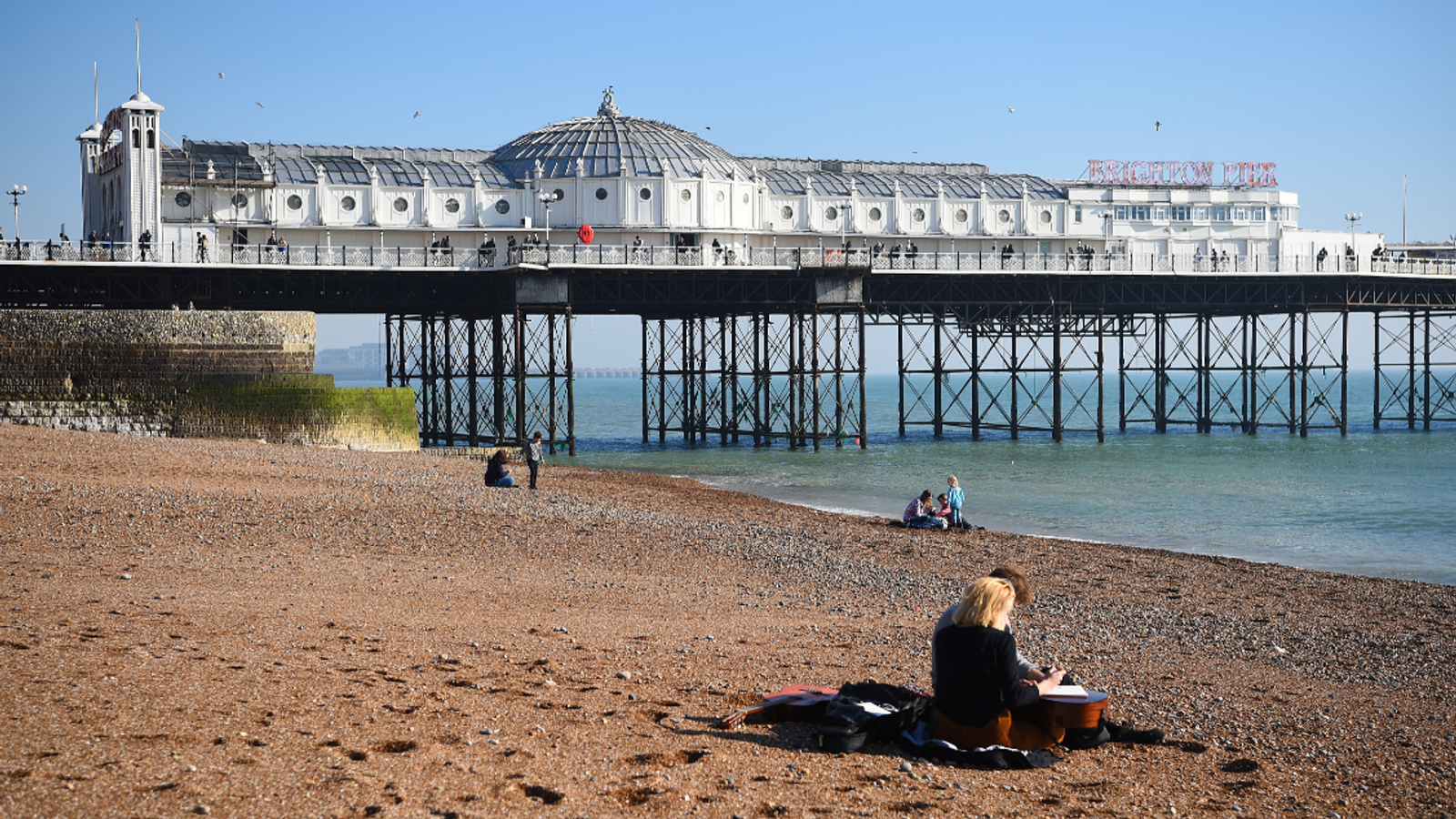The UK is seeing its “own form of a COVID Mexican wave” as infections move from the west of the country to the east, a leading symptoms researcher has said.
Professor Tim Spector, co-founder of the ZOE COVID symptom study, said areas in the west which have been worst affected are now seeing lower rates, suggesting they have reached the peak of infections.
However, London, the South East, East Anglia and eastern parts of the country are seeing cases increase, according to data from his study.
Live COVID-19 updates from the UK and around the world
“It is our own form of a COVID Mexican wave”, he said
Holiday destinations are partly to blame for the wave, according to Professor Spector, who says he is now seeing hotspots forming in other areas – with more expected to follow.
Current hotspots are:
• Devon, which now has similar rates to Cornwall
• Brighton
• Bournemouth
Across Europe, Prof Spector said the UK is still top for confirmed cases and that “this is not just because we are testing more”.
He added: “There have been some outbreaks where Britons have been on holiday and it is quite interesting that Majorca and Portugal are two of those areas.
“And it could well be that the influx of British tourists might be partly responsible for that.
“I don’t think we will be seeing any major shutdown of the tourist industry though, given that most people have been vaccinated, but be aware that lots of these holiday destinations will have increasing rates in the next six weeks.”
He also warned that social distancing was “getting fast eroded”.
Please use Chrome browser for a more accessible video player
Prof Spector said people inside stadiums at “big football matches” and fans enjoying the games outside were examples of people being lax on the rules.
Office for National Statistics data, published today, showed 68% of adults socially distanced this week, down from 85% in mid-April, while 73% avoided physical contact outside the home.
The country has also not yet hit the peak of cases, according to Prof Spector’s latest weekly update.
The ZOE app is the world’s largest study of COVID-19 and has more than four million global contributors logging information on symptoms, tests and vaccines.
It has identified more than 20 symptoms and the professor claims “poor government advice” is causing people to not recognise signs they are infected.
Data from the app also show how symptoms can vary slightly between vaccinated and unvaccinated people.
A fever is number four on the list for those who haven’t been vaccinated, while it doesn’t make the top five for people who have had at least one dose.
A persistent cough, still considered a main symptom by the NHS, came in as the fifth most popular for all groups.
Headache, sore throat and runny nose made up the top three in vaccinated and unvaccinated people who had contracted the virus, but they do not appear in the NHS list of main symptoms.
Professor Spector said: “I think this is really important for us to realise and we need to start telling people about these new symptoms.
“I’m hoping the new health secretary will take heed of this and show he is following data rather than dogma and update the guidance to reduce the number of infections and potentially save a lot of people getting long COVID.”






















